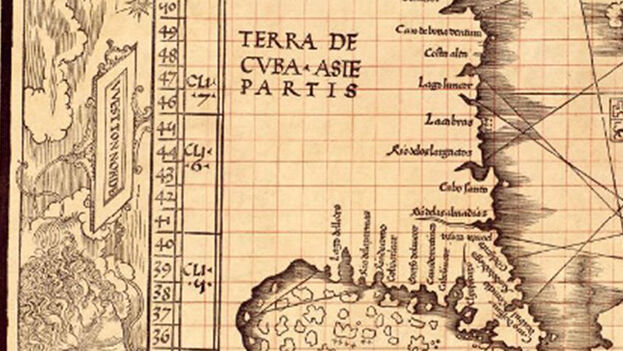
![]() 14ymedio, Yunior García Aguilera, Madrid, 9 May 2023 — Our history classes, with few exceptions, were insufferable. They hammered our brains with the Marxist view that, from the time of the aboriginal people up to the bearded cacique, the history of Cuba was limited to the struggle of the working class to create communism. Our exams were reduced to organizing events chronologically, coming up with adjectives for our heroes, repeating by heart dates and slogans. I tip my hat to those teachers and historians who come out of that system, but to be sure, they are like gold nuggets at the bottom of a river.
14ymedio, Yunior García Aguilera, Madrid, 9 May 2023 — Our history classes, with few exceptions, were insufferable. They hammered our brains with the Marxist view that, from the time of the aboriginal people up to the bearded cacique, the history of Cuba was limited to the struggle of the working class to create communism. Our exams were reduced to organizing events chronologically, coming up with adjectives for our heroes, repeating by heart dates and slogans. I tip my hat to those teachers and historians who come out of that system, but to be sure, they are like gold nuggets at the bottom of a river.
It’s shameful that so many college students have no idea what distinguished the Taino people from the Ciboney, or can’t name more than two presidents from the republican era. What’s worse, these last decades have been a wash, drowned in censorship and propaganda. In this column, I will try to approach, as a curious, avid reader, the hidden story of an island that was first named Juana and later Fernandina.
“History Without Hysteria” originated as a segment that lasted two seasons on the Cuban podcast El Enjambre. I invite you to debate, dissent, add information and anecdotes. Let us make our history a recurrent theme in our daily conversations, so that it is not confined to academic circles.
I’ll start off with Columbus, a figure so misunderstood that even he never knew what he had “discovered.” I begin with him, because he was the first to write down the name of our land, although he did it incorrectly. Without a clue as to what the Lucayans were telling him about a large, rich island to the south, the Admiral wrote in his diary a mysterious name: Colba.
Upon reaching land, probably at what is today Bariay, he stated that well-known phrase about “the most beautiful land,” etc. But let’s not get carried away with vanity. Columbus had been travelling for more than two months surrounded by water everywhere and with a crew that was about to throw him overboard. The Admiral would see a bird and sigh; a blade of grass would make his eyes water. All the hyperbole and metaphors were meant to raise the morale of the men and reassure the kings they had invested their two million maravedis well.
Another theory states that the first landing in Cuba was in Puerto Padre. In fact, there is a legend that a sailor exclaimed to a priest: “What a port, padre!” But no, friends of Las Tunas, despite all the paintings that depict a priest with a cross at the landing, there was no priest aboard the two caravels, nor on the ship Santa María.
Christopher Columbus, whose name in Genoese means something like “the dove of Christ,” had made his living as a sailor and a vendor of maps, until he found a more ambitious project: going left to reach the Indies. Fortunately, he did believe that the world was round, not like the millions of people who today still believe it is flat. But his calculations were incorrect. The terrestrial sphere was about four times larger than he and others of his age believed.
Even so, upon landing in Cuba, he assumed that he had finally reached Cipango, the name the Europeans then used for Japan. On top of that, the Admiral asked where he could find the great Khan, and the Taino answered, “Cubanacán, Cubanacán.” The Admiral was overwhelmed by the throng in hides and racoons, although his steadfast objective was the gold. He did not see much, however, but for the occasional ornament in the form of snot hanging from their noses.
On his second voyage, Columbus attempted to circumnavigate Cuba by going south, but he gave up before he reached the western end. He then rectified the assessment made on his first voyage: Juana was not an island, but the mainland. The Admiral understood that he was not in Cipango, but in Catay (China). And he made his men swear to it, on pain of losing their tongues.
Today, more than five centuries later, many are still clueless. Sadly, a lot of people still have a romantic and childish vision of us, with no idea about the country pulsating beneath Castro’s propaganda, the tourist ads, and the ideological banners. For all those suffering from Columbus syndrome, there’s a very native expression: “Wake up, we’re in Cuba!”
Translated by Cristina Saavedra
____________
COLLABORATE WITH OUR WORK: The 14ymedio team is committed to practicing serious journalism that reflects Cuba’s reality in all its depth. Thank you for joining us on this long journey. We invite you to continue supporting us by becoming a member of 14ymedio now. Together we can continue transforming journalism in Cuba.
